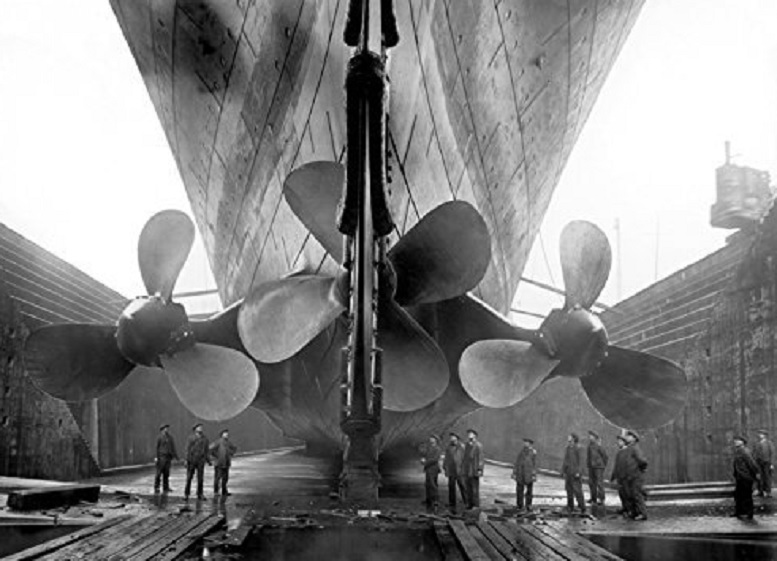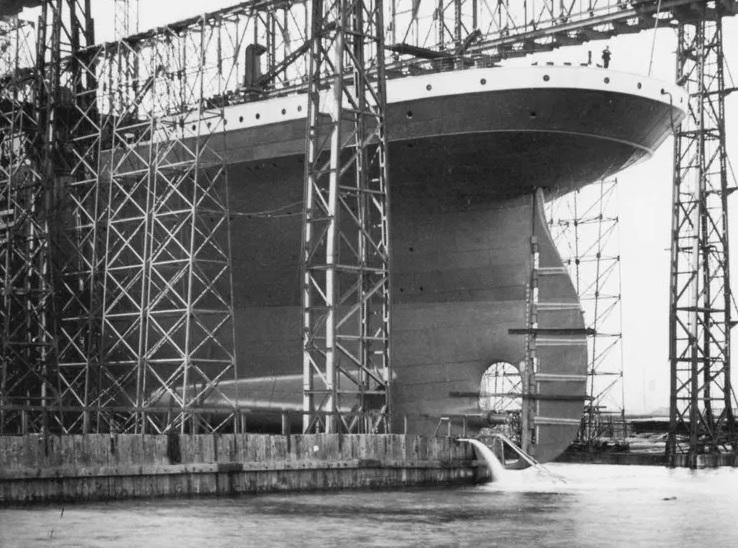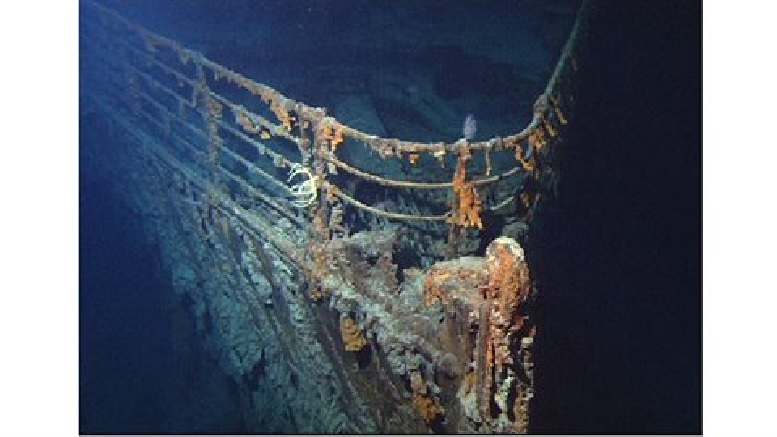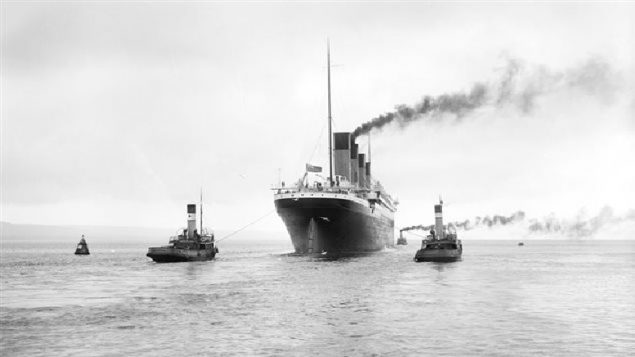It was unbelievable.
On April 15, 1912, the word was being flashed around the world by telegraph that the world’s biggest, most impressive and theoretically unsinkable ship, was gone.
Late on the 14th, the RMS Titanic on its maiden voyage and travelling at 22 knots, struck an iceberg about 600 kilometres off the coast of Newfoundland.
The ship carried the still new technology of wireless telegraphy, and sent out both the old and new distress signals, CQD, and SOS.
Newfoundland first to hear distress
Late at night at a lonely Marconi telegraph station at Cape Race, Newfoundland, the operators on duty had been relaying messages from passengers aboard the ship to friends and relatives awaiting their arrival in New York. Titanic was to arrive two days later on the 17th. Suddenly the messages changed. The Newfoundland operators were the first to hear the unbelievable call that RMS Titanic was in trouble, in fact very soon, dire trouble.

The huge propellers of Titanic. shown compared to workers beneath them. During trials it was reported that it took two nautical miles to bring the ship to a halt from speed of 20 knots. . (Harland and Wolff)
As messages flashed back and forth among the Cape Race station, Marconi headquarters in Montreal and New York and White Star owners, there was confusion as to the seriousness of the problem, after all RMS Titanic was supposed to be unsinkable.
However, shortly after 2 AM on the 15th of April, Titanic with its bow already underwater and heavy stern rising, breaks in half and slips into the depths. Some 1,500 souls were lost as there were not enough lifeboats and rafts for all on board. An investigation later resulted in changes that required all ships to carry enough lifeboats for the number of passengers on board.
Rescue efforts
The much smaller RMS Carpathia out of New York was bound for Trieste and found itself some 50 to 60 nautical miles from Titanic that tragic night. The wireless operator’s shift had ended at midnight but he decided to keep his headphones on as he readied himself for bed. It was just enough time, and luck, that he picked up the distress wireless from the fatally wounded ship. He sought out the sleeping Captain and Carpathia was soon racing through the icefield to the Titanic’s last reported location. Indeed the Captain ordered that the ship’s heating be shut off to increase power from the boilers, pushing the Carpathia even beyond its rated top speed. Arriving on site, some three and a half hours later the crew spotted only a few lifeboats and proceeded to rescue survivors.
The SS Californian, which had stopped in the icefield for the night and was closest to Titanic, saw but did not react to the distress rockets of the Titanic. That Captain was later harshly criticised by inquiries for not recognizing the distress and failing to react.

Note size of rudder, Many feel its relatively tiny size was unable to make a difference and turn th ship at all in the very short time after the iceberg was spotted. (|Harland and Wolff)
Later that morning and in following days, a number of ships set out from the Canadian port of Halifax to search for survivors, but only found bits of wreckage and many frozen bodies in the frigid Atlantic water. Some 150 are buried in three cemeteries in the city. The city has recently declined a request to exhume those bodies for an American project to identify them using DNA.

Graves of victims of the Titanic sinking located at Fairview cemetery Halifax, N.S. PHOTO- Archer 10-wiki
What is forgotten is the fact that Titanic had never actually been declared unsinkable, but rather “practically unsinkable”, the “practically” quickly forgotten by media.
Also often forgotten is that Titanic had two equally huge and impressive sister ships, Olympic and Britannic.
Britannic had a short career sinking in the very early part of the First World War after striking a mine in November 1916 off the Greek island of Kea, The ship sank in a mere 55 minutes. Olympic lasted much longer but had a number of collisions in her career and was scrapped as unprofitable in 1934.
Titanic soon will be gone
As the wreck of the Titanic lies at a depth of almost four kilometres, bacteria are quickly eating away at the ship. In 2010 scientists estimated only a pile of rust would remain within less than 20 years.

Titanic was found in 1985, in subsequent visits over the years it was seen that the wreck is quickly rusting away and may be almost entirely gone within several more years. (NOAA/Institute for Exploration/University of Rhode Island (NOAA/IFE/URI
Not the worst
Although Titanic and the loss of some 1,500 souls is the stuff of legend with multiple books and songs, it is not the worst maritime sinking
- Jun 1940- RMS Lancastria-bombed while evacuating civilians and some military personnel from France. Officially 1,738 loss, estimated anywhere from 4,000 to 9,000, full story of loss still withheld.
- Jan 1945 -MV Wilhelm Gustav- torpedoed by Soviets while fleeing from occupied Poland with civilian and military personnel- estimated loss 9,400
- Apr 1945-MV Goya-torpedoed by Soviets in Baltic sea, documented 6,100 aboard, many women and children. estimated many more undocumented. Sank in just seven minutes Only 183 survivors
- NON MILITARY- Dec 1987- MV Dona Paz- (ferry) collision with MT Vector carrying gasoline with ignited the ship and water. Estimated loss 4,375
- NON-MILITARY- Sep 2002- MV Le Joola- off the coast of Gambia. Overloaded, it capsized in a storm –estimated loss 1,863
Additional information-sources







For reasons beyond our control, and for an undetermined period of time, our comment section is now closed. However, our social networks remain open to your contributions.